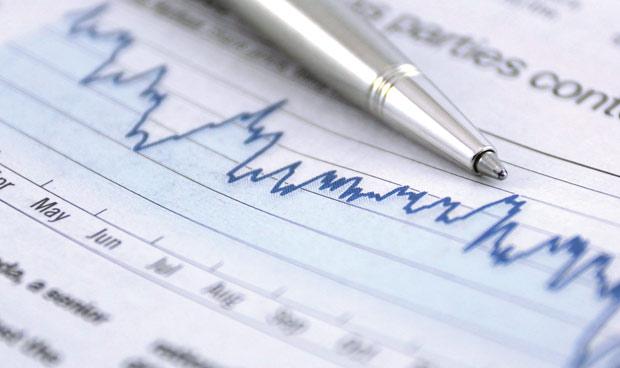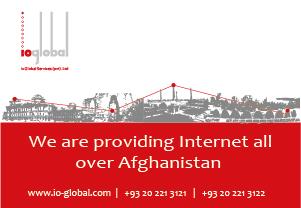KABUL (Pajhwok): The real economy of Afghanistan is markedly different from the one that is officially reported, according to a fresh USAID research.
In 2019, the Afghan government reported imported goods valued at $6.8 billion and exported goods worth $863 million, of which the exports were 45 percent fresh or dried fruit, 21 percent medicinal herbs, and 10 percent minerals.
In reality, however, trade at the borders is more than twice the amount of freight reported by volume and possibly an even greater multiple of the reported value. For example, our estimates of talc exports at their peak in 2018—prior to the curtailment of production in 2020—are more than twice the amount reported in trade statistics, and almost five times the reported value.
High-resolution satellite imagery also reveals a coal industry with significant undeclared exports, as well as substantial amounts of chromites crossing into Pakistan without any of the trade recorded in official statistics.
The same vast discrepancies can be seen with reported imports. Our calculations, show fuel imports from Iran of 2.5 million metric tons, compared to the 1 million metric tons reported in Afghanistan’s official trade statistics.
It is more difficult to calculate aggregate amounts or values of particular goods, but our analysis of the trade in transit goods—items that are transported duty-free through Afghanistan’s neighbours on the agreement that they are consumed within Afghanistan—suggests a quantity and value of goods that far exceeds declared imports.
This research also points to a vibrant trade in a variety of commodities sourced from all over Asia and the Gulf, transported across Afghanistan by a network of traders and transporters, before being smuggled into Pakistan or other neighbouring countries by handcart, pack animal and truck.
This trade employs tens of thousands of people and generates hundreds of millions, possibly billions of dollars, but the income, profits and its contribution to the economy goes unreported. The implications of the level of underreporting at Afghanistan’s borders are manifest.
For one, it points to an Afghan economy that is much less agricultural than official statistics suggest. For example, trade reports claim that minerals constitute only 10 per cent of the total value of Afghanistan’s exports.
However, this is based on a systematic underreporting of the amounts of coal and talc stone traded, which underplay the sector’s importance to the overall economy, even more so when coal and talc stone make up 99 percent of Afghanistan’s official mineral exports- almost all of it going to Pakistan.
In fact, once the potential level of underreporting of coal and talc stone is factored in, minerals make up perhaps 23 percent of the value of Afghanistan’s exports. This figure is likely to rise further were accurate assessments of other minerals, precious stones and metals, such as gold, chromites and lapis, included lazuli. Similarly, the amount of employment, income and rents generated by these non-agricultural activities, most notably the extraction, production, and processing of minerals, and Afghanistan’s position as a major USAID.
GOV MANAGING LOCAL RESOURCES AND CONFLICT
4 conduits for trade, questions the assumption of Afghanistan’s agricultural character. At its peak in 2018, the talc stone industry in Shirzad created an estimated 681,000 labour days of employment, and up to $3.3 million in local wages, much of it to a rural population, who are most likely recorded as “farmers” in official statistics.
In contrast to projected estimates in which minerals and transit trade are critical to longterm growth, this research shows that minerals and trade make up a significant share of the existing economy, and are major sources of revenue for officials, insurgents and local powerbrokers.
The second implication of underreporting of goods at and within Afghanistan’s borders is the loss of substantial revenue to the Afghan government.
Our assessment of fuel imports from Iran indicates a shortfall of up to $100 million per annum in duties and taxes due from the amount of fuel that enters Afghanistan undeclared.
The annual losses to the government on talc stone production were in the order of $6.6 million before new contractual arrangements were put in place and local traders ceased operation. While, the multiplicity of goods entering Afghanistan from a wide range of countries, makes it impossible to offer an accurate assessment of the government losses on undeclared transit goods, it would not be unreasonable to estimate that it would be in the hundreds of millions of dollars given that these goods are typically more valuable than fuel, and the number of container trucks entering the country vastly exceeds the number of fuel tankers. Ultimately, the scale of the losses across all three value chains have significant implications for the financial sustainability of the Afghan state. This does not even begin to include similar losses in other value chains.
This research shows that where the administration in Kabul loses financially, corrupt officials and the Taliban gain. The latter two have a deep knowledge of the amount of goods that enter and exit Afghanistan due to their presence on the ground. Control over chokepoints provide a comparative advantage to the Taliban and corrupt officials, whether at the points of production in the case of talc stone, at strategic locations in transit such as checkpoints at critical junctures on the main highway for fuel and transit goods, at official and unofficial border crossings, or at the point of sale.
What Kabul doesn’t see Kabul doesn’t receive. The main highways serve as the primary artery on which the Taliban and corrupt officials predate (see Figure 1). The amount of money involved is startling. For example, the Taliban can earn up to $83.4 million per annum from their tax on the movement of fuel and transit goods entering from Iran alone, siphoning off a further $26.7 million at Muqur in Ghazni on transit goods joining the main highway from Spin Boldak. The strategic positioning of their checkpoints in the southwest mean that there are few vehicles that evade payment and with the amount of traffic plying these roads, it is likely that the tax on fuel and transit goods is one of the Taliban’s primary source of finance, significantly larger than the $40 million at which opiates are valued.
nh
Views: 270









GET IN TOUCH
NEWSLETTER
SUGGEST A STORY
PAJHWOK MOBILE APP